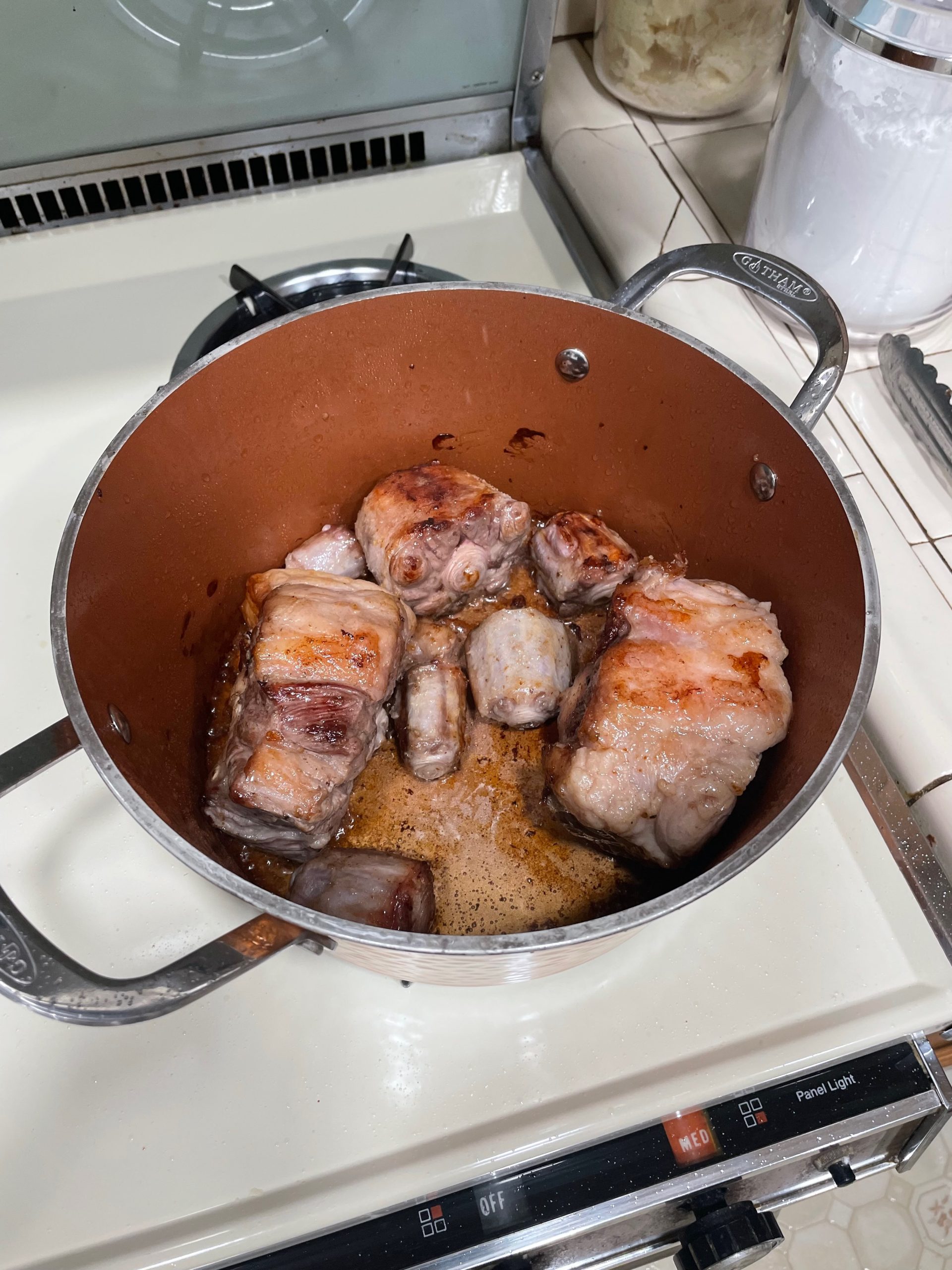Equipment
- Crockpot
Ingredients
- 6 cups beef broth or bullion
- 2 Tbs browning oil
- 1 onion chopped
- 3 Parsnips substitute with carrotsfor Non-Diabetics
- 4 ribs celery
- 1 Jicama substitute with Potato for Non-Diabetics
- thyme
- garlic
- 6 oz tomato paste See Diabetic Tomato Paste Recipe
- Salt & Black Pepper
- 1/2 cup Cabernet Sauvignon I use Robert Mondavi Cabernet Sauvignon Private Selection
Instructions
Braising: See notes below
- Brown (Braising) the oxtails in a pan with oil. Brown the fatty sides. The ones that look like tread on a tire.

- Add to your crockpot with 6 cups of beef broth or bullion.
- Add 2 T of the browning oil.
- Toss in chopped onion, 3 carrots/parnips, 4 ribs of celery, 1 potato/jicama, thyme, and garlic.
- 6 oz of tomato paste
- Salt & pepper
- 1/2 cup of Cabernet Sauvignon

- Oxtail should be cooked to an internal temperature of 160–165°F
Notes
Braising:
Braising is a recommended method for cooking oxtail because it tenderizes the meat and cartilage, and adds flavor to the stock.
Jicama:
You can cook jicama in the same way you cook potatoes (they look very similar in the pan), but the texture of the jicama will remain much firmer–think crispy apple–even when cooked. Jicamas also are eaten raw in salads or tossed in a stir-fry for a little crunchy addition.
Parsnips:
Jicama can be a healthy choice for people with diabetes because it’s high in fiber and low in sugar, which can help regulate blood sugar levels:
-
-
Low glycemic indexJicama has a low glycemic index, meaning it doesn’t cause blood sugar levels to spike as much.
-
Fiber contentJicama is high in fiber, which slows down the digestion of glucose and releases it into the bloodstream gradually.
-
InulinJicama contains inulin, a soluble fiber that can improve insulin sensitivity and glycemic control.
-
-
Substitute for high-carb foodsJicama can be used as a substitute for foods that are high in carbohydrates, which can reduce the glycemic load of a meal or snack.
Other health benefits of jicama include:
- Promoting digestion
- Reducing the risk of heart disease and stroke
- Lowering LDL “bad” cholesterol
- Reducing the risk of developing blood clots
- Easing constipation
- Good for gut bacteria
Parsnips can be part of a healthy diet for people with diabetes because they are high in fiber and low glycemic index (GI) and glycemic load (GL):
-
FiberParsnips are high in fiber, which can help regulate blood sugar and lower cholesterol.Fiber also slows down the absorption of sugar, which can help prevent blood sugar spikes.
-
Glycemic indexParsnips have a low GI and GL, meaning they have a minimal effect on blood sugar levels.
-
Other nutrientsParsnips are also rich in vitamin C, potassium, and antioxidants. Vitamin C helps boost the immune system, while potassium helps balance blood pressure and lower the risk of kidney stones. Antioxidants can help prevent oxidative stress and damage to cells, which may help protect against chronic conditions like diabetes.
However, people with diabetes should still be mindful of how many carbohydrates they eat, even from starchy vegetables like parsnips. Eating too many carbohydrates can lead to weight gain and make it harder to manage diabetes.

